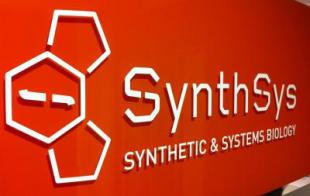An essential purpose of synthetic biology is to expose the design principles of natural biological systems. Like our fingerprints, our physical makeup is distinct to each individual.
Therefore, when disease or illness strikes, treatments designed for a specific condition can produce different outcomes as they interact with each patient's physiology. Synthetic biological devices allow us to intuitively capture the behaviour ranges generated by simple biological circuits to gain insight into natural processes.
Synthetic biology faces unique engineering challenges in the natural environment, as biological processes are subject to so-called "noise". For example, a crucial protein in a cell might be fabricated incorrectly from its blueprint, or the clones of cells might have errors in their replication. Sometimes this might represent an advantage, driving evolution in a harsh environment, or it might degrade the performance of an engineered system.
Understanding how biological systems cope and thrive with this noise is fundamental. We must understand and categorise the noise to build robust systems using natural building blocks. If we can reproduce the strategies employed by natural methods, we should be able to make our designs more resilient to noise.
Our scientists have researched this methodology and utilised it to enhance existing applications and develop innovations in bioengineering.
Traditionally perceived as expensive and complicated, synthetic biology has made limited use of mathematical models. Our researchers have demonstrated how in silico simulations and in vitro/vivo experiments can be integrated to develop a cyber-physical platform that automates model calibration and saves 60-80% of the effort. We aim to give synthetic biologists an additional tool to accelerate the pace toward applications by providing a comprehensive list of steps and pointing the reader to the code we use to operate our platform.
Non-alcoholic fatty liver disease (NAFLD) represents a global healthcare challenge, affecting one in four adults, with death rates predicted to rise. The progressive form can lead to fibrosis, cirrhosis, and hepatocellular carcinoma. However, no licensed medical treatments exist for this condition due to the complexity of disease pathogenesis.
Although both genetic and environmental factors may contribute to disease progression and susceptibility, a 'one size fits all' approach to treat NAFLD might not be optimal given the heterogeneity of the disease. The development of clinically relevant in vitro models of the disease will pave the way to overcome these challenges, supporting the design of non-invasive diagnostic tests.
Our team are researching this technology to investigate how to use 'big data' to identify efficacious therapies and personalised medicine applications. Illustrating a comprehensive understanding of the whole disease spectrum –and not just the later stages– could be the key to understanding this disease and its progression.



